NES Classic Omissions
Top 10 Best Games Not on the NES Classic Edition!
The NES Classic Edition is a miniaturized version of the groundbreaking 8-bit console that defined the industry in the 1980s. The retro system came pre-loaded with 30 games, and many all-time greats were included. Most of these games were already available digitally through Nintendo’s Virtual Console, but the nostalgia factor was turned up several notches on the NES Classic Edition. Not only was the system itself modeled after the original NES, but it also came with a replica NES controller that allowed you to play the games the way they were meant to be played! I loved the concept of the NES Classic Edition, but it would have been nice if Nintendo provided a legitimate way to add more games to the system. The selection of games is surprisingly awesome, and there is a broad range of genres represented from both first and third-party developers. That being said, there are titles that were conspicuously absent from the NES Classic Edition that I feel should have been included, and this list aims to give them the attention they deserve. These games are not necessarily being ranked in order of how good they are. Rather, they’re listed in accordance to how glaring their absence was.
10
Crystalis
1990
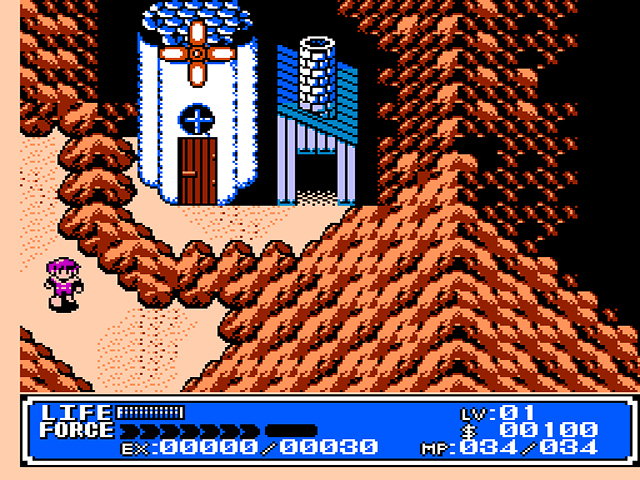
A post-apocalyptic future provides the backdrop for an epic journey in this overhead adventure game. While an obvious Zelda influence can be seen, Crystalis actually surpasses Nintendo’s classic in many areas. The environments have more detail, the controls seem less rigid, and the gameplay has more depth. Basic attacks are performed with four elemental swords imbued with the power of wind, fire, water, or thunder. Certain enemies are weak against specific elements, meaning your old weapons don’t become useless the moment you find a new sword. There are also several shields and suits of armor to equip, and additional items to acquire – like a gas mask that allows you to breathe in the poisonous forest or rabbit boots that allow you to jump. The ability to cast several unique spells also makes Crystalis stand out. One spell allows you to telepathically communicate with animals while another lets you change your form into another character. Perhaps the coolest spell of all gives you the ability of flight! Large bosses, a proper experience system, and a multitude of dungeons to explore round out this great game. Crystalis would have been the perfect compliment to Zelda and StarTropics on the NES Classic Edition.
9
Gun-Nac
1991

The NES Classic Edition is fueled by nostalgia, so I understand the importance of loading it with well-known games. At the same time, it would have been a great way to highlight games that everyone overlooked the first time around. I have nothing against Gradius, but Gun-Nac is my favorite shoot ’em up on the NES by far. No one made shooters like Compile did, and Gun-Nac is one of the most visually impressive games on the system. The screen is filled with large and colorful sprites, and the action seldom slows down regardless of how many enemies are thrown at you. The game also has more depth than typical NES games, and the amount of weapons to experiment with is staggering. Gun-Nac is defined by its intense action, but it’s also known for its charming sense of humor. Fast-paced shooters typically appeal more to hardcore gamers, but Gun-Nac is one of the most accessible shooters on the system since players can select their difficulty. Compile released a number of underrated NES games (including Zanac and The Guardian Legend), but Gun-Nac is their most sought-after game on the system and it would be nice if you could buy the game without having to sell a kidney.
8
Dragon Warrior III
1992

It was nice to see Final Fantasy on the NES Classic Edition, but it would have been great to see the other major NES RPG franchise represented as well. Dragon Warrior III may look and sound like the first two Dragon Warrior games, but its revolutionary “class system” greatly expands upon its predecessors. As you recruit new party members, you assign them a job class. There are eight classes in total, and they greatly affect the character’s stats and abilities. Fighters excel at physical attacks, soldiers can make use of powerful weapons, and wizards possess unmatched magic abilities. Additionally, characters can change classes once they reach a certain level. The class system is incredibly liberating and allows you to customize your party to fit your style. The customization aspect also makes this game one of the most replayable RPGs ever created. Dragon Quest III was a monster hit in Japan and sold nearly four million copies worldwide. Sadly, it barely made an impact on the American market and Japan accounted for over 97% of the total sales. It’s a shame it was overlooked by so many, as it stands as the quintessential Dragon Warrior game on the NES and is easily one of the best RPGs of the 8-Bit era.
7
Teenage Mutant Ninja Turtles III
1992

The NES version of Teenage Mutant Ninja Turtles II was a surprisingly faithful arcade port and one of the best 8-bit beat ’em ups of all time. The Manhattan Project followed the same basic formula, but I think it would be a better for the NES Classic Edition since it was developed specifically for the NES. The game features eight brand new stages, and the environments are highly imaginative. Throughout the game, the turtles find themselves battling Foot soldiers in the sewers, on rocket-propelled surfboards, and taking to the skies to fight their way through the floating island of Manhattan. (Of course, no Ninja Turtles game would be complete without a trip to the Technodrome.) Konami made great use of the Ninja Turtles license and used characters from the cartoon, films, toy line, and comic books. They added a little more depth to the gameplay, too, and the four turtles were given unique special moves. This detail effectively gave each turtle their own identity, and it made playing the game with a friend even more fun.
6
Bionic Commando
1988

In sharp contrast to most platformers, the main character in Bionic Commando does not have the ability to jump. Instead, players will work their way through the levels by using a bionic arm to swing from one platform to the next. The arm can also be used to attack enemies or retrieve power-ups and bonus items. As if the bionic arm wasn’t cool enough, you can also find bazookas for increased fire power, flare bombs that can light up dark rooms, and iron boots which can be used to kick enemies away while swinging with the bionic arm. You will also have the ability to tap into communication lines to gain valuable tips from the enemies. Besides being completely original and entertaining, it’s awesome to take control of a commando in a battle against futuristic Nazis and evil scientists. The ending – which involves shooting a Hitler clone in the face and watching his face explode – was likely the goriest thing to ever sneak past Nintendo’s censors, so it’s not surprising the game wasn’t featured on the NES Classic Edition.
5
Castlevania III
1990

The final NES installment of the classic series brought Castlevania back to its platforming roots. Although they abandoned many of the adventure aspects introduced in Simon’s Quest, Konami took other measures to ensure the game remained as nonlinear as possible. At various points, gamers were given the choice of multiple paths to follow. These choices had a profound impact on how the game was played and affected everything from which levels you’d play through to the ending you’d see. The most significant addition to Castlevania III was the ability to play as multiple characters. In addition to the traditional vampire-hunting hero, you could assume the role of a wall-climbing pirate, a young witch with magical powers, and the son of Dracula (and future star of Symphony of the Night). Each character brought something different to the table, and this gave gamers a reason to play through the adventure multiple times. It was nice to see two Castlevania games on the NES Classic Edition, but I couldn’t help feeling like something was missing.
4
Ninja Gaiden II
1990

I understand why Ninja Gaiden was chosen for the NES Classic Edition rather than it’s sequel, and it admittedly had a bigger impact on the industry as a whole. The arcade version of the game was a relatively slow-moving beat ’em up, but the home version was an intense action-based platformer with tight controls that basically felt like a faster version of Castlevania. The game was praised for its detailed graphics and atmospheric music, and the use of cinematic cutscenes was especially noteworthy. The sequel was more of the same in many respects, and it featured all the same wall-clinging ninja action that made the first game such a hit. The game felt a little more varied than the original, however, and the introduction of environmental effects gave the stages a distinct flavor. The ability to create orange ninja clones was another welcome addition and allowed for new strategies to be implemented. I can’t argue with the decision to include the original, but Ninja Gaiden II was also deserving of a second look.
3
DuckTales
1989

I can’t speak to the feasibility of licensed games on the NES Classic Edition, but the existence of The Disney Afternoon Collection proves that a re-release of Capcom’s classic Disney games was at least a possibility. DuckTales makes excellent use of its license, and its stages are filled with familiar faces from the beloved cartoon series. Unlike many licensed games on the NES, the characters and environments actually do the source material justice. The goal in DuckTales is to travel the globe as Scrooge McDuck and add to your legendary wealth by finding treasure. You’re armed only with a cane, but it can be used as a pogo stick to jump off the heads of enemies in the most delightful fashion. Colorful graphics, catchy music, tight play control, and non-linear levels make DuckTales one of the best platformers on the NES. The game isn’t especially long or challenging, but it makes up for it with its high replay value. It would have been nice to see Duck Tales 2 and Rescue Rangers as well, but they don’t carry the same nostalgic weight that the first DuckTales does.
2
Contra
1988

Contra is the gaming equivalent to a 1980s action flick. It’s completely valid to suggest that Super C was the better game, but there’s no denying that the original Contra is the most iconic run-and-gun game on the NES. The game helped define the genre as we know it, and it’s one of the most important co-op titles ever. Super C was a great game in its own right, but the level designs were more imaginative in the first game and there was more thought put into the placement of the enemies. At the end of the day, Contra is the game everyone remembers, and the sequel feels somewhat derivative. Oddly, the NES Classic Edition doesn’t mark the first time that Contra was snubbed in favor of its sequel. Super C was released on the Wii Virtual Console in 2007, while the original was missing in action. (The MSX version of Contra was released in Japan, but the NES version wasn’t released in any region.) The game could be unlocked in Contra 4 on the DS, but it would be nice if the casual gamer had a hassle-free way of playing Contra on their television.
1
Mega Man 3
1990

Many consider Mega Man 2 to be the best in the series (myself included), but the sequel improves upon its predecessor in several areas. The levels are longer and more numerous, making it the largest of the NES Mega Man games. Also, the addition of the slide technique speeds up the gameplay and adds a certain level of strategy – especially during boss battles. The game also introduces us to Mega Man’s faithful sidekick, Rush Dog, and it has a surprisingly compelling storyline featuring Mega Man’s mysterious brother. Several familiar faces will show up as well, including four robot bosses from Mega Man 2 and the imposing Yellow Devil from the original Mega Man. Naturally, Mega Man 3 also featured the same sharp graphics, tight control, and killer music that the series was known for. Whether or not it surpasses Mega Man 2 as the best in the series is a matter of personal taste, but no collection of NES games would be complete without Mega Man 3. If two Castlevania games can be included on the NES Classic Edition, then I see no reason why the Blue Bomber couldn’t have made a couple of appearances as well.

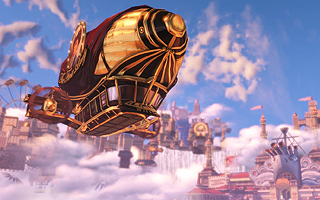
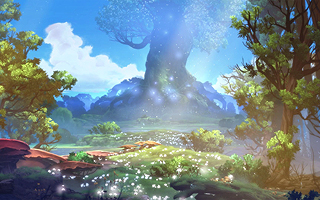
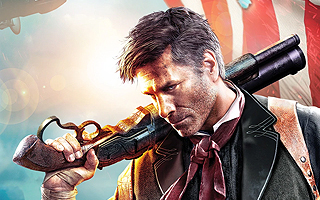
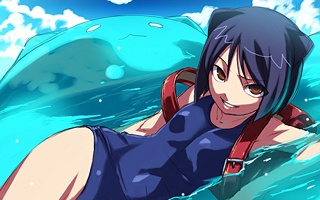
Do you agree with this list? Let us know what you think by leaving a comment below. Your opinion matters!